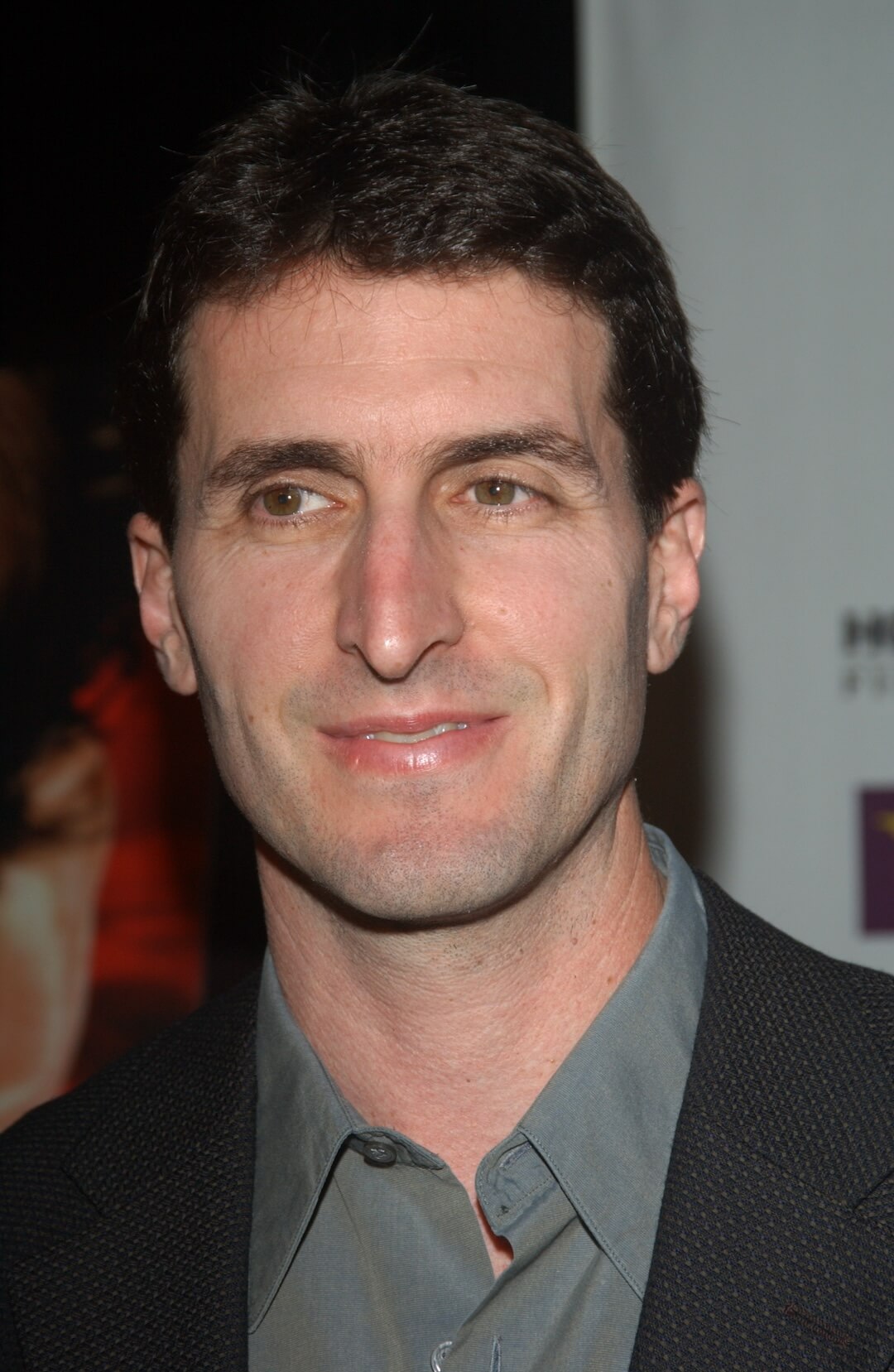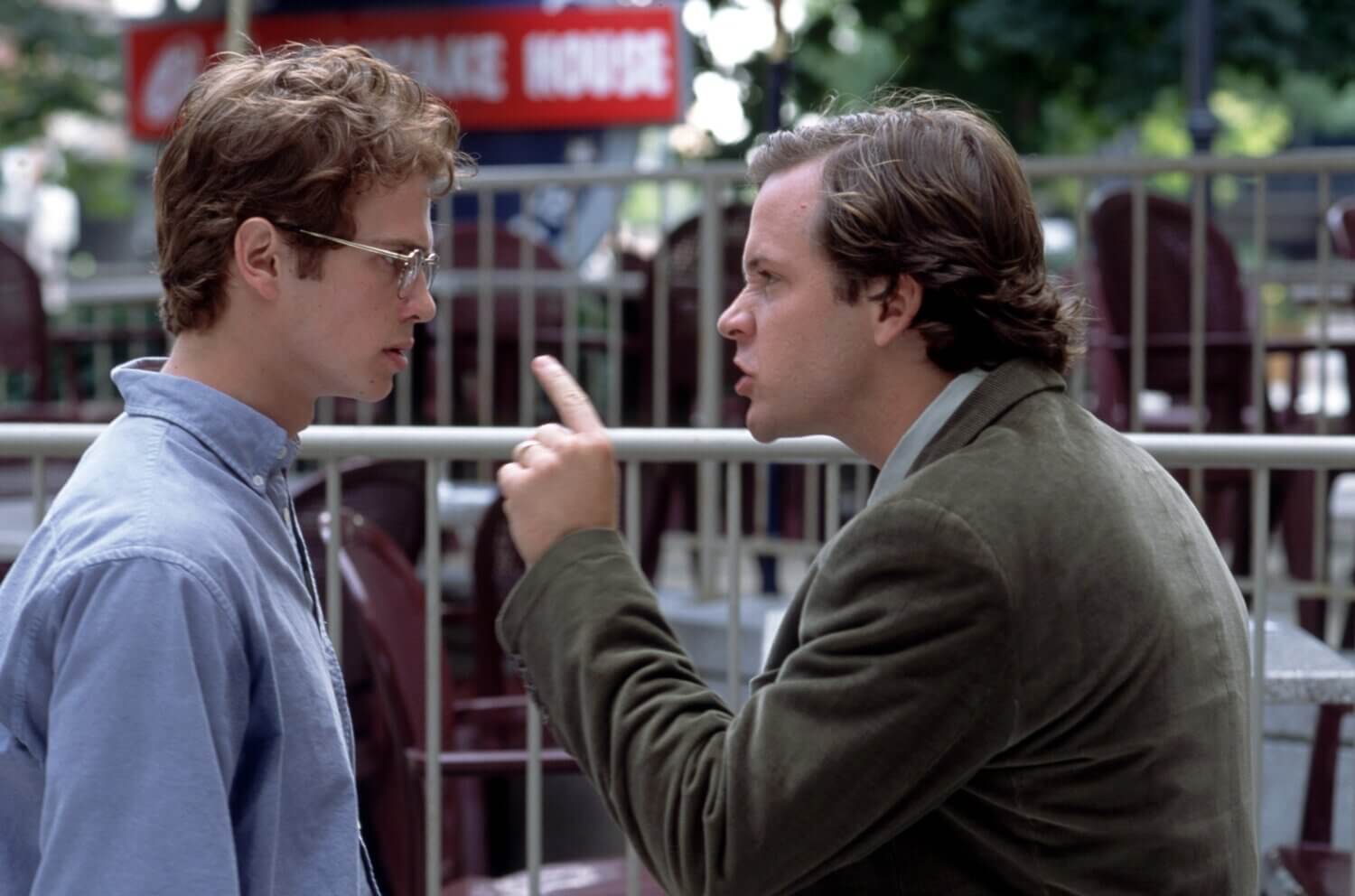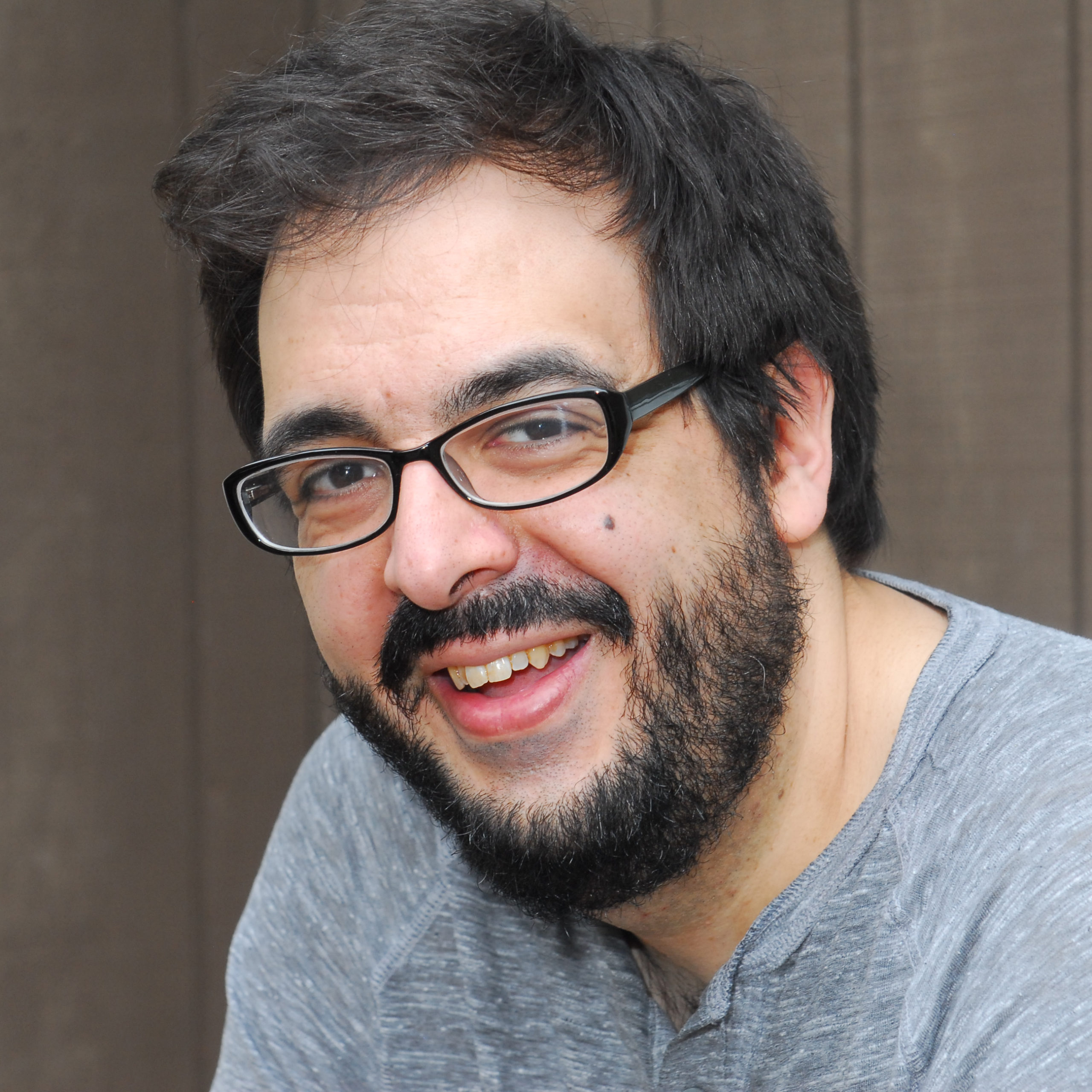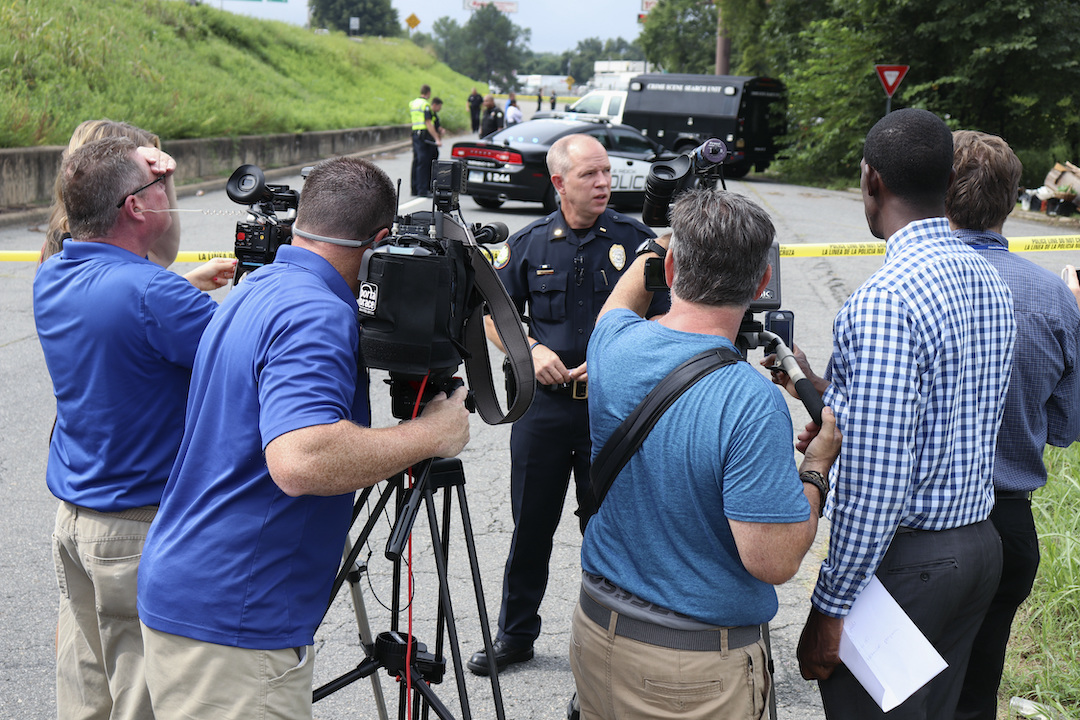The potential to fail always exists. You write the screenplay, but it doesn’t get cast. You get the cast but can’t get the movie made. It gets made, but poorly. Or it gets made well and you botch the post-production.
Somehow, the director’s first film beat those odds. It was released to critical acclaim, and made its way onto college syllabi. It has endured. So has the nagging from the margins. He wishes one of his actors was nominated for an Oscar; that the film made more money. And the title — well, he was never a fan.
Then there are the moments you cannot anticipate.
Years after the film’s release, the director met his subject at a party. He clarified who he was. Then, he apologized.
“Shattered Glass,” writer-director Billy Ray’s account of Stephen Glass’s fall from The New Republic’s colorful chronicler of the fringe and extreme to shamed and panicked fabulist, was released nationwide in movie theaters 20 years ago late last year. It’s an anniversary that is the unofficial start of “beloved” status for any pop culture treasure.
In deference to this milestone, the film’s enduring appeal in J-school classrooms, and its rent-free existence in the backs of reporters’ minds, Poynter spoke with more than a dozen people involved in either Glass’s rise and fall or the making of “Shattered Glass” over three months. They offered varying accounts of the man and the film, from inappropriate aggrandizing to a life-defining experience.
Time isn’t always a tonic. Reflection can irritate. Memories get reconsidered, lost or stifled as priorities shift and harden. Time moves on; a movie is static. For the man who led “Shattered Glass,” and the people involved in the incident that inspired it, the story will never end.
***
Though it’s ostensibly about professional journalists working at a storied magazine, “Shattered Glass,” Ray said, is “the ultimate high school movie.” Glass, 25, is the cool kid. His boss, executive editor Charles Lane, is the by-the-book geek. Then, the order is disrupted. Glass’s latest story for what’s mockingly known as “the in-flight magazine of Air Force One,” 1998’s “Hack Heaven,” is revealed to be a lie by Adam L. Penenberg and his colleagues at Forbes magazine’s online arm, Forbes Digital Tool, a publication with no cachet. It subsists in exile in a second-floor New York City office space, away from the treasured print publication.
The movie portrays Penenberg and Lane as paragons of journalistic rigor. That, said Kambiz Foroohar, Penenberg’s editor at Forbes Digital Tool, is a big part of the film’s appeal, as “journalists love stories about journalism.”
“Shattered Glass” is entertaining as hell. It’s a noir-ish, tautly paced character study of a con artist’s unraveling that exemplifies the doggedness and integrity that can make journalism a noble endeavor. I find the movie aspirational, even inspirational.
“‘Shattered Glass’ is a movie about a liar, so my claim to fame is that I outed a liar.”
The takeaways from the movie aren’t front page, bold type. Penenberg’s initial reaction to my opinion was a gentle, “Come on!” Then, he corrected me.
“‘Shattered Glass’ is a movie about a liar, so my claim to fame is that I outed a liar,” he said. “Compare that to ‘All the President’s Men,’ where they took down the White House, or ‘Spotlight’ that took down the Catholic Church. So those movies may inspire people to uncover the truth.” Instead, “Shattered Glass” is a “great yarn,” Penenberg said, “a really weird story about a guy who found a loophole” in how magazines work that allowed him to publish fiction as fact for far too long.
Buzz Bissinger, who wrote the September 1998 Vanity Fair article that inspired “Shattered Glass,” was less diplomatic. “I have no interest in this,” he replied to my email interview request in late June. “All it does is aggrandize Glass. Enough. He is a little s— who needs to go away. Impact on journalism? Be serious. Journalists don’t need to learn it is a bad idea to make stuff up and lie. Good luck.”
***
“Hack Heaven” chafed Penenberg. This was his beat.
Glass’s story centered on a 15-year-old computer hacker named Ian Restil who was hired by California software firm Jukt Micronics to protect its systems after he hacked into its databases and posted every employee’s salary, alongside “more than a dozen photos of naked women,” on the company’s website. The story went on. Restil had an agent. Law enforcement officials in Nevada were anxious. Twenty-one state legislatures were considering something called the “Uniform Computer Security Act” to crack down on these kinds of protection deals.
Reading the story, Penenberg said, was like being a baseball reporter and learning from another publication there was a brand new team. And this wasn’t some message board post, but The New Republic. It had to be true, right? He started digging.
Penenberg read “Hack Heaven” on a Tuesday. By that Sunday, thanks to hours of phone calls — including an interview with Lane and Glass — and then-nascent internet sleuthing, Penenberg and his colleagues uncovered Glass’s work as “a complete and utter hoax” in a story that ran May 10, 1998. Ultimately, Glass was found to have fabricated at least 36 articles during his time at The New Republic.
It was Lane, though, who cast everyone involved into a strange immortality.
After he confirmed Glass’s lying, but before Penenberg and Forbes had a chance to publish, The New Republic leaked the news to Howard Kurtz at The Washington Post and let a New York City public relations firm handle the fallout.
“It was a PR strategy to get the story out ahead of Forbes but it was also about The New Republic’s own credibility,” Lane explained via email. “I didn’t want people to think we were only taking action only in response to outside pressure when, in fact, it was a combination of that and our own assessment of the right thing to do.”

From left: Rosario Dawson as Andie Fox, Cas Anvar as Kambiz Faroohar, and Steve Zahn as Adam Penenberg uncover the lengths of Stephen Glass’ fabrication in “Shattered Glass.” (Courtesy: Photofest)
Penenberg was furious, he recalled in a 2014 remembrance for the now-defunct PandoDaily. “You worked with Glass for years, you were his editor, and you didn’t even know he made up anything until I came along,” he told Lane on Sunday, May 10.
Forbes Digital Tool founding editor David Churbuck had preached patience. That ended when Lane and The New Republic looked to get the jump. The Forbes story posted Sunday, May 10, 1998. It was a scramble. Churbuck, who left that Friday for a long-planned French vacation, struggled to keep up with a modem and a laptop. He stuck to the apartment’s landline, annoying his wife to no end. There was no content management system. Churbuck and Foroohar said webmaster John Moschetto was summoned to set up the website and post the story. (Moschetto, through email, said he had “some memory of those events,” but not of getting it online.)
Meanwhile, Lane was enduring an internal public relations crisis after Jack Shafer, the mainstay editor at Washington City Paper, called him out for staying quiet. Lane decided then to take every call, though he feared disaster. I’ll look like an idiot and the magazine will look bad. The opposite happened.
“I didn’t have any appreciation for the fact that people would be pleased with the fact that I had cracked down on Steve and fired him,” Lane said. He had no idea that he’d still be answering questions about the Glass affair 25 years after he talked with Bissinger.
The rights to the article were bought by HBO executive Gayle Hirsch. “I want you to know you’re my second choice to write this,” producer Craig Baumgarten tells Ray, who at the time was already a veteran screenwriter (“Volcano,” “Hart’s War”). Paddy Chayefsky, the acclaimed screenwriter of “Network,” wasn’t available. He died in 1981.
Lane doubted the movie would get made.
***
Billy Ray had to get it right. It’s a movie about journalism, fraudulence in journalism. There was no other way.
He talked to dozens of people. Anything that made the script had to be double-sourced. (An anecdote from a colleague of Glass’, Tucker Carlson, was amazing. But Ray couldn’t confirm it, so it got chopped.) His quest for information, to understand Glass, was relentless. He did interviews as he wrote the script, as he prepped the movie.

Director Billy Ray at the Los Angeles premiere of his movie “Shattered Glass” on Oct. 19, 2003. (Shutterstock)
Earlier in his life, Ray couldn’t cut it as a Northwestern journalism student, telling The Ringer’s Bryan Curtis that he left Medill after getting a C in a freshman writing class. “You will never be a writer,” he recalled being told by the professor.
He related to Glass, who grew up in the upscale suburb of Highland Park, Illinois, with the same culture. “You are prized and rewarded based on your accomplishments, and therefore failure is just anathema; failure is loathsome,” said Ray, an Encino, California, kid. “And the fact is that in real life, failure is necessary. It’s important. It teaches us.”
The obstacles were plenty. A new regime arrived at HBO. The screenplay sat in turnaround for two years. “We went to 22 finance companies, 21 said no,” Ray said. “Only Lionsgate said yes.” Adam Merims, one of “Shattered Glass’s” producers, said Ray was under pressure from the beginning. The schedule and budget were tight. There was also the incalculable burden that every director feels to make a great film. Running on “sheer stubbornness, just pure fear of failure,” Ray felt he had to will the film into existence while battling a nonstop chorus of self-doubt. We’re going to fall behind. We’re going to go over budget. I’m going to blow it.
Fear can shrivel you into inactivity or it can compel you to know everything, so you seize control. It helped that Ray was (and still is), in Merims’ words, “an enthusiastic student of everything.” He started early, treating producers and first-time directors to lunch and asking for advice.
“I’m a rookie, with this stuff,” Ray told Mandy Walker, the director of photography, who became his carpool partner and sounding board. “You’ve got to help me.” She did.
“Part of my job — and it was such a joy, I have to say — was to introduce him to the language of my craft,” Walker said. “And he picked it up so quickly. He worked emotionally with the technicalities of filmmaking. That is a talent and an art, and not everybody can do that.” They talked constantly and refined the visuals. In the movie, when Glass is riding high, the camera is open, the shots are filled with color and light. As his charade is revealed, the light is kept low, like he’s hiding from Lane. The depth of field drops, putting the background out of focus and highlighting Glass’s isolation.
Ray understood that, like journalism, directing is the art of making friends quickly. “He wanted the actors to love him and follow him on his journey,” said Jeffrey Ford, Ray’s frequent editor. “And they did. They fell in love with him immediately.” The stellar cast, which includes Chloë Sevigny in her indie film heyday and a peak-Skywalker Hayden Christensen, didn’t have to search for answers, Ford said. Before the cameras rolled, Ray’s screenplay was in AP Stylebook order. Ray and Walker shot listed the entire movie — and hit 90% as planned.

Peter Sarsgaard, left, and Hayden Christensen, at the premiere for “Shattered Glass” in Los Angeles on Oct. 19, 2003. (Shutterstock)
To get a feel for the business they’re portraying and to generate rapport, Ray instructed Christensen and Peter Sarsgaard, his Glass and Lane, to go out, report, and file an assignment. The night before shooting started in Montreal, Ray rented out the hotel ballroom and screened “All the President’s Men” for the cast and crew.
“I don’t have a canvas this big, and I know I’m not as talented as Alan J. Pakula,” he told them. “But this is what I’m trying to get to. This is where you’re setting the bar.”
On the final day of shooting, Ray yelled “cut” for the last time, and found an empty, isolated stretch of wall. As everyone else celebrated, he sat down and cried.
***
Liars and con artists and loafers have always existed in newsrooms.
Janet Cooke won a Pulitzer Prize in 1981 — which The Washington Post later returned — for “Jimmy’s World,” her fictional profile of an 8-year-old heroin-addicted boy. The spring before “Shattered Glass” was released, Jayson Blair of The New York Times was found to have repeatedly lifted other reporters’ work to use in his own stories in addition to fabricating details.
“It’s really common. I’d say if you worked at a large-size newspaper for any length of time, I’d say staffing of 100 or more, you knew a guy who cooked it,” said David Simon, the former Baltimore Sun reporter best known as the creator of “The Wire.” “Maybe he wasn’t making crazy s— up, like Glass making up entire scenarios, but you knew a guy who cooked his quotes, who (had) the perfect anecdotes every time, but no last names. You knew these guys. It’d be sort of common knowledge in the newsroom, except to the editors that were advancing themselves by advancing his. That’s always the commonality.”
It’s not going to stop, Simon believes. “As the prospects in journalism diminish, some people are going to get hungrier and more desperate.” Not to mention, it’s easier to fabricate a quote than to make a phone call or knock on a door. Just ask Scott Templeton.
Cooke and Blair’s sins were bolstered by institutional shortcomings. At The New Republic, if a writer’s notes were their source material, it was assumed they had done the work. (Glass also created business cards and newsletters, not to mention the Jukt Micronics website.)
“As the prospects in journalism diminish, some people are going to get hungrier and more desperate.”
“The magazine being so small and so tight, it made his deceptions even more inconceivable,” said Jason Zengerle, who worked with Glass at The New Republic. “I definitely have thought about this over the years: To catch Steve, you would have had to accuse him of fraud. You only had 10 or 15 colleagues. There weren’t that many people there. It wasn’t some nameless, faceless person in a big bureaucracy. One, the idea that someone who worked there would be doing that was pretty unfathomable to begin with. And, two, if you were going to call him on it, it wouldn’t have been catching him on a simple mistake or a journalistic error or something like that. It went to questions of character. That’s just really hard to do. I think he knew that and he took advantage of it. I think that’s pretty unforgivable.”
Zengerle knows. He fact-checked “Hack Heaven” and thought his career was over. Lane assured the petrified young staffer it wasn’t his fault and kept his involvement from the press. “I would have loved, in hindsight, to press Steve on stuff, not taken his word for things,” Zengerle said, “but the fact that Chuck didn’t throw me under the bus, I think that really speaks a lot to his character.”
Working in Glass’s favor, too, Lane said, was confirmation bias, which he knew nothing about in 1998. You’re inclined to believe young Republicans are monsters, that the novelty industry would embrace the Lewinsky-Clinton scandal — both stories seemed right according to The New Republic’s worldview, and both stories were retracted after a closer inspection following their writer’s ousting.
And Glass sold the stories. “We were kind of the late-stayers of the team at that time, and he would come into my office a lot and regale me with what he was working on,” said William Powers, The New Republic’s former media columnist. “I remember specifically the church of George Bush story. He came into my office and he told me the whole thing. It was completely gripping the way he told it, and it was also hilarious. He was always hilarious.”
The situation at The New Republic had three wrinkles. First, a reporter at a ragtag outlet uncovered Glass’s act just days after the initial story appeared, culminating in the offending publication’s older editor firing the writer. Second, Glass also freelanced for Harper’s, The New York Times Magazine and Rolling Stone. He was a star with style. Zengerle was once asked by Mother Jones to find the least powerful person in D.C., an assignment that was conceived for Glass.
Third, underneath all the gossip lay a new media vs. old media narrative, one that was not immediately apparent. In May 1998, the primary thought at the Forbes Digital Tool office was that Stephen Glass was full of it.
***
In May 1998, Forbes Digital Tool, now Forbes.com, did not play the volume game. It published maybe 10 stories a day. Its alumni went on to work at The Wall Street Journal and CNN. Forbes Digital Tool strove for the same journalistic rigor as Forbes. Om Malik, a former reporter, said that ethos came from Churbuck, a Forbes editor who became Forbes Digital Tool’s founding editor.
“He had learned his craft the old-fashioned way, going out finding information in a pre-internet era where databases were hard to come by and you had to go to talk to people to get facts,” Malik said. “From my standpoint, that is the part of the story which never really got told properly — that old-fashioned reporting is (how) everything happened.”
It is a pain, Penenberg wrote years later, to prove something or someone doesn’t exist. “Every time you strike out means another query, another phone call, another wasted hour poking around databases or the internet.” Moschetto, the webmaster, said he crawled and downloaded the now-infamous Jukt Micronics website in case Glass erased it. Librarians at “Forbes” pitched in. Malik dug around, calling his venture capitalist and engineering sources to get anything on Jukt Micronics. Churbuck showed Penenberg how to “find out about a company,” such as seeing if it’s on record with the secretary of state in California.
“After some intensive digging, in partnership with Adam, I said, ‘Something is really f—ed up here.’” Churbuck recalled. “This dog isn’t hunting.”
Churbuck had no idea what to do. He decided to play the role of skeptic. Not only to vet “Hack Heaven’s” ambiguities and inconsistencies, not just to give Lane a chance to respond, but because the damage to the site — not to mention Forbes, the real asset — would have been massive.
Then Lane told Penenberg they were giving up Glass to The Washington Post. Churbuck had no choice. The rush to beat Goliath, the thrill of saying “run that, baby,” was absent.
“There was no victory there,” he said. “There was no sense of scoop or gotcha. It was sad. Frankly, it was something that we stumbled into, it wasn’t something we went looking for. It was, in my opinion, an accidental discovery that we couldn’t drop. It landed in our hands.”
Churbuck spent years mired in, and worshiping, details. He knew that flubbing one — a middle initial, a courtesy title — undermined the reader’s faith in a story. Unveiling Glass paid off in that moment, but at what cost?
“All we did here was we ruined a 25-year-old kid’s life,” Churbuck said. “We took a great name in journalism, The New Republic, and tarnished it.”
“All we did here was we ruined a 25-year-old kid’s life. We took a great name in journalism, The New Republic, and tarnished it.”
Before the Forbes Digital Tool story went live, Foroohar, the executive editor, gave himself a byline. He said he worked on the story with Penenberg and that he suspected “Hack Heaven” was fiction before he assigned Penenberg to follow up. (Penenberg’s response via email: “If he believed the Glass The New Republic story was cooked before Glass’s confession he never told me.”)
“This was a whole team effort, but on that Sunday, he and I wrote the story together,” Foroohar said. “The thing was that he was the reporter, I was the editor.” It wasn’t right to have a joint byline, so he deleted his name and wrote an editor’s letter. The Glass story, Foroohar thought, would have a two-day life span. Looking back, “I would have kept my name on it, obviously,” he said with a laugh.
According to Penenberg, the issue of a byline was never discussed, even though it is brought up in the film by Penenberg’s fictitious coworker played by Rosario Dawson, a composite who Malik and Penenberg said represents Malik. “It was too clear that I was writing it,” he recalled. “It was my story. I knew everything. And then people were helping, and it was wonderful. They were fantastic, but that was never an issue. And it was never a problem at Forbes.com. We never had a lot of egos there. We were just really good.”
Foroohar is happy with his career. So is Malik, who became a renowned tech and internet writer. “I don’t think about it, honestly,” he said. “It was an article Adam wrote. It changed Adam’s trajectory. I’m very happy for him. I am where I am because that was my destiny.”
“I’m very happy that Adam made his reputation on that one story,” Churbuck said. “He did some excellent work there. He nailed it.”
Does he wish Penenberg would give his former colleagues more credit? “Let someone else tell you who was involved,” he said. “I’m too close to it. I was omitted from the story for a variety of reasons that I don’t want to air in public.”
Penenberg, through email, said Foroohar has “always seemed to harbor bitterness about the Glass affair” and that he has credited Churbuck, whom he called “a great boss,” for his contributions to the story.
“I’m a real-life character in this tale, perhaps a catalyst, but it is a story written and disseminated by others,” Penenberg added. “If David or Kambiz has issues with how they have been portrayed (or not portrayed), they should take it up with the people who made the movie. Because it’s the movie that has cemented our places in journalism history, whether we like it or not.”
***
Two young men asked to borrow the child’s sled. The child, 5 or 6 years old, obliged. The pair headed off: one with the sled, the other following. They reached the bottom of the hill and — wait, this can’t be — raced into the woods.
“Dad, they took my sled!”
The man bolted down the hill, the child in pursuit on their father’s sled. Then, little legs churning, they entered the woods.
“Dad, I’m here!”
The father turned around, looked at the child, and dropped to one knee.
The child caught up. “What are you doing? You gotta catch them.”
The father smiled. “Nah. We’ll get you a new sled.”
“Why’d you stop?”
“I was afraid you might trip.”
No matter where he was, a battlefield, a newsroom, a wintry New England postcard scene, the father and the fighter had an uneasy alliance inside Michael Kelly, Glass’s editor before The New Republic publisher Martin Peretz replaced him with Chuck Lane. He’s portrayed in the film by Hank Azaria as smart, principled and feisty, the ideal leader for a newsroom ripe with young, precocious talent. He eventually worked as an editor for The Atlantic Monthly. Then he returned to Iraq, where he had garnered acclaim as a war correspondent.
A lot of his friends in Swampscott, Massachusetts, didn’t know about this. They knew he liked to garden and kayak. The obituaries and the paparazzi at the funeral caught them by surprise.
In April 2003, Kelly was covering Operation Iraqi Freedom when the Humvee he was in came under fire south of Baghdad. The driver’s evasive action caused the vehicle to roll into a canal. Kelly and the driver were trapped for 25 minutes. Both died. Michael Kelly was the first American reporter killed in the war, the same war The New Republic endorsed. He was 46 years old.
“There are certainly interesting aspects of his life and personality that don’t make it into the movie. But is it a better legacy than what he feared? I hope so.”
Tamzin Hadasa Kelly was about to turn 7 years old when the unfathomable happened. Today, “Shattered Glass” provides comfort for them, specifically two scenes.
In The Great Comma Debate scene, the staff must circle every comma in an issue after Peretz deems it “rife with comma errors.” Kelly calls Peretz. The New Republic staff raptly listens behind his closed office door. “I’d resign before I let you bully them like that again, and I will,” Azaria says. “You understand that?” The other is when an on-the-ropes Glass visits Kelly at work looking for an ally. “Did you ever cook a piece when I was your boss? Did you ever lie to me? The Young Conservatives piece … the mini-bottles? Was that true?” Glass’ silence to Kelly, an upright man who defended his lies as facts, is damning.
“I think he was so tortured that he hadn’t caught Stephen,” said Ray, who interviewed Michael Kelly for the film. “It was really hard for him.”
He believed in doing the right thing, in “keeping wolves away from sheep,” said Tamzin Kelly. They believe “Shattered Glass” illustrates the challenges of “living up to those principles at once” and how the do-the-right-thing mentality isn’t so straightforward in a newsroom compared to Kuwait.
“People can write a million articles or books about his legacy as a journalist, and they’ll always pale in influence to what that one movie does,” they said. “It will define how people remember him with breadth, if not depth. Because people watch movies. They don’t read magazine articles. Is it a legacy he would have wanted? Who’s to say? There are certainly interesting aspects of his life and personality that don’t make it into the movie. But is it a better legacy than what he feared? I hope so.”
What made Michael Kelly a great editor was he could fight for his employees and then snap back to reality. Tamzin Kelly saw that up close. The realization came 20 years later: Michael Kelly didn’t want his older child to see him beat up two punks.
***
Forbes Digital Tool’s exposure of Glass was hailed as a triumph for online journalism. At the time, said Penenberg, “we were viewed as being completely inferior to print and that we had no business doing anything.”
That’s now part of wistful nostalgia. “The metabolism of the internet is much higher than it used to be,” Malik said. That means a lot more content to get readers’ attention and “little time and room for proper gumshoe reporting.” Though online outlets like ProPublica and The Texas Tribune offer deeply reported stories, Malik said, “we have let our organizations be shaped by the internet rather than anything else.”
“There’s just an element now that masquerades as journalism in the name of webinizing language and appeasing the search engine and getting the traffic. It raced to the bottom — and I sensed it would,” Churbuck said. That includes the site that legitimized online journalism. “Friends,” Malik said, “don’t let friends go to Forbes.com.”
Social media and video platforms, forget about the ease of starting a website, can turn anyone into a journalist — regardless of whether they have training or a functional moral compass.
“The problem of fake news and fabrication and falsification has only kind of grown,” Lane said. “Honestly, the level of deceit that goes on that was carried out in those articles by Steve Glass is very quaint compared to what is technologically possible today.” Glass developed a reputation for chronicling the sordid and ridiculous in Washington, D.C., but he always represented an outlet with gatekeepers and rules, whether it was The New Republic or a freelance client.
“The problem of fake news and fabrication and falsification has only kind of grown.”
Glass and company’s antics have had an impact outside of newsrooms. “They created this atmosphere where it became more common to question younger, inexperienced journalists,” said Nick Hirshon, assistant professor of communication at William Paterson University in Wayne, New Jersey. “‘Do they really have a scoop or are they making something up?’ To me, that’s very upsetting for someone who’s trying to train young journalists.”
Penenberg is now the director of the American Journalism Online Master’s program at New York University. He interviews every applicant. One question he asks is typical: Where do you see yourself in five, 10 years? It elicits the usual slate of answers. I want to write for The New Yorker. I want to cover currency markets for Bloomberg. In 2023, three incoming students identified as social media influencers. That was a first, as was this answer: I see myself having more followers.
“They’re already a brand, and they want to learn journalism in pursuit of this brand that they already think they have,” Penenberg said. “They want to learn journalism because it will give them credibility and also make them better. But their ultimate goal is not to get a job in journalism. It’s to further whatever they’re doing now. That’s new.”
He does not consider the development a death knell for journalism, but an opportunity.
“I want to educate anybody and teach them how to do ethical, great journalism,” Penenberg said. “Whether they want to be journalists, or they want to go into communications or PR or marketing or content or politics or health care. I don’t care. I just want to make them better at it, and I want them to engage in critical thinking and I want them to be accurate.”
***
Jason Zengerle loved “Shattered Glass.” The reporting was on the screen. Ray captured how much the New Republic staff hated Chuck Lane. Before taking Glass, a popular coworker, to the woodshed, Lane replaced the beloved Kelly, a subplot Bissinger downplayed in his Vanity Fair story. Lane was stunned to see Peter Sarsgaard writing ideas down on a whiteboard in his office just like he did at the magazine.
Powers, the former New Republic media columnist, has no plans to watch “Shattered Glass.” He doesn’t want to live through the pain of Glass’s lies again. But he inadvertently confirmed the film’s story pitch scenes in The New Republic’s conference room, where Glass tests his lies like a stand-up comedian refining their routine before the Netflix special. “He was such a good storyteller and such an amazing presence, that must have played a role in disarming maybe skepticism or doubt,” Powers recalled. “You got caught up in whatever Steve was talking about and sharing with you.”
The movie became, Penenberg said, not only “the reality of what happened,” but “the history in most people’s minds.”
It changed everything.
“Think of what it would have been like if it had been a bad movie.”
Ray faced the reporter’s permanent, impossible challenge: He could not include everything, like the scramble for Forbes Digital Tool to get its story up before The Washington Post. Churbuck didn’t make the cut. But those who are portrayed onscreen get preserved in a cinematic amber. Viewers will forever know Kambiz Foroohar (played by Cas Anvar) as the well-scrubbed editor who chides Penenberg (played by Steve Zahn) for getting scooped by Glass and is later interrupted at the urinal by his vindicated employee (an incident that did not happen). They won’t see that his career went beyond introducing a reporter to the story of a lifetime. Unless they care, they’ll never know that he helped expose political and corporate corruption, stories that leave reporters looking over their shoulders. Stories that keep society honest, but lack heat, buzz, or whatever adjectives are required for the multiplex treatment.
“I have a feeling I probably wouldn’t be at NYU if it weren’t for ‘Shattered Glass,’” Penenberg said. He landed the job in 2004, when he was lecturing about the film and his book, “Tragic Indifference.” Lane’s initial reluctance to speak about Glass led to highlights such as teaching at Princeton and Georgetown and getting interviewed on “60 Minutes.”
“Think of what it would have been like if it had been a bad movie,” he said, laughing.
***
Glass, who works for a law firm in California, declined an interview request with Poynter via email. Former New Republic colleagues interviewed for this article have not corresponded with him.
Ray was desperate to do so. Then they were introduced at that party, long after “Shattered Glass’s” release. Ray finally explained himself to Glass. I know I’ve caused you pain. I don’t celebrate that in any way. I’m really sorry.
Glass accepted his apology. They did a Q&A on “Shattered Glass.” Ray attended the funeral of Glass’s wife, Julie Hilden, who died in 2018 from early-onset Alzheimer’s.
Ray hoped Glass meant what he said. He’s still not sure.
For all the worries and fears Ray carried while filming “Shattered Glass,” it showed him a way to channel a passion into a profession. “To me, everything I direct feels like journalism,” said Ray, whose other directorial efforts include “Breach” and “The Comey Rule.” “‘Here’s how people behaved. Here’s why. Here’s what resulted. Here’s how it matters.’”
Many elements go into directing a movie, observed Jeffrey Ford, the film editor. They come at you all at once. As they watched the Toronto Symphony Orchestra record Mychael Danna’s score, Ford saw Ray moved to tears by the magic of movies, the result of doing the kind of work his film’s subject only pretended to pursue.








For an inspirational and unexpected sequel, see Bill Adair’s wonderful 2021 story about Glass’s life after the scandal.
Loving Lies
“Stephen Glass, the most notorious fraud in journalism, decided he would live by one simple rule: Always tell the truth. Then he broke that rule.”
https://airmail.news/issues/2021-12-4/loving-lies